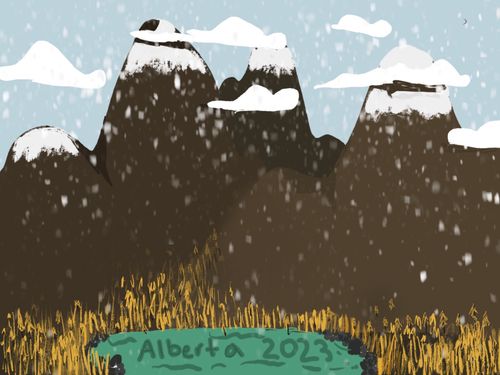I don’t think I’ve ever done as many hikes in such a short period and been so close to death.
Yes I’m talking about the Alberta trip, and yes I’m overreacting. But to be fair I didn’t have my inhaler and the mountain air does not love my asthmatic lungs. Mr Huges decided that it would be a good idea to hike as much as he could when we were on the trip and he sure did that. I’m actually a huge fan of hikes and once I got to the top I totally forgot about all the complaining and all the: “there is no way any view would be worth this.” But always when I got to the top of the hike I was saying: “this was soooo worth the pain.” So I guess I switch up quick. Anyways let’s get back to the learning part of this blog post.
‘
For humanities our driving question was: “How has the geography of the west shaped who we are?” We answered this through different videos and assignments. The first assignment we worked on was the investigative video.
I covered this one in the maker post but this is also a part of humanities. The video was more in the maker area but the questions were based on our humanities driving question. We had to talk to people and ask them questions about the Rockies. We also had to create a thesis to base our questions off. I created mine based on tourism because based on what we learned about the Rockies and I thought it was the most relevant. I asked people about why they were visiting the Rockies.
We also created a multi touch book that showed our travels and what we learned. Each page we had to put a photo of the location we visited and then explaining how it showed one to more of the five themes of geography. If you’re wondering: “What are the five themes of geography?” Then I’ll be happy to explain.
The five themes of geography are basically five different classifications of geography. There’s location, (Which is basically talking about the surrounding area or the absolute location which is like coordinates or an address or something.) there’s place, (which is like cultural characteristics and physical characteristics.) there’s also human environment interaction, (It’s basically how the environment and humans affect each other.) there’s movement and (it’s like the movement of people, goods and ideas.) there’s region. (Which is like formal regions like B.C and there’s functional regions.
We did so much learning on this trip. A LOT more than our Oregon trip but all in all this was super fun and I’m happy i went!
